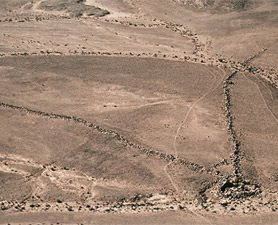Jerry Fodor, a philosopher interested in brain science, and Massimo Piattelli-Palmarini, a brain scientist interested in philosophy, have written a book called What Darwin Got Wrong. They think that Darwin's model of how evolution takes place, generally called "natural selection," makes no logical sense. And they are not the first to think that the whole businesses rests on some kind of philosophical error; philosophers have been pointing out the problems with the logic of evolution since the 1860s.
From a review by Kevin Malik in the Literary Review:
Some genes have multiple functions while others act as 'master genes' helping to switch bits of DNA on and off. Master genes seem not to recognise species boundaries. The same master genes for eye development can be found in sea urchins (in which they remain unexpressed), fruit flies and humans. The implication is that major differences between species may be less about the evolution of new genes than about the same genes being regulated and expressed in new ways.
According to Fodor and Piattelli-Palmarini, these discoveries reveal not just the complexity of the evolutionary process but also the wrongness of Darwinian theory. . . .
There are two halves to the argument. The first part of the book is a breezy tour through recent biological advances, particularly in the field of evolutionary developmental biology (or 'evo devo'). The Darwinian idea that organisms become adapted to their environment through natural selection cannot be true, Fodor and Piattelli-Palmarini insist, because it is a theory that relies entirely on external factors as the drivers of evolution, whereas the new biology has shown the importance of internal organisation and regulation.
Most biologists at the forefront of this research remain, however, committed Darwinians. Why? Because, suggest Fodor and Piattelli-Palmarini, they have failed to understand the fundamental conceptual flaws of Darwinism. The second part of What Darwin Got Wrong attempts to lay out these flaws.
At the heart of the argument is the critique of what Fodor and Piattelli-Palmarini call the 'selection-for' fallacy: the belief that natural selection chooses particular phenotypes because they provide the organism with an evolutionary advantage. This cannot be, they argue, because of the presence of 'co-existent' traits. Some bodily features that Darwinists claim have been selected for in the course of evolution possess more than one trait or property, only one of which actually increases fitness (the Darwinian term for the capacity to reproduce), but all of which may be correlated with increased fitness.
A heart is an organ that both pumps blood and makes a noise. Pumping blood efficiently increases fitness; making a noise does not. But since all hearts that pump blood also make a noise, both pumping blood and making a noise are correlated with fitness. 'The adaptationist story', Fodor and Piattelli-Palmarini observe, 'was supposed to be that traits are selected-for when they are correlated with fitness, which by assumption both ... are.' So how, they ask 'could it be true that either is selected-for and the other is not?'
Humans, they argue, can make a distinction between a trait such as an efficient heart that truly increases fitness and a trait such as a noisy heart that may be correlated with greater fitness but does not itself provide an evolutionary advantage. That's because humans possess minds and are able to use reason, and judgement, and ask 'what if' questions - 'What if hearts did not make a noise?', and 'What if hearts pumped less efficiently?'
Nature, however, is mindless. It cannot ask such questions and so cannot make such distinctions. Hence, 'the claim that selection is the mechanism of evolution cannot be true'.
I am not nearly so skilled in logic as professors Fodor and Piattelli-Palmarini, so I will limit my critique to pointing out that whatever their logic shows, natural selection does, in fact, take place. Put mice in a big cage where they have to fight each other for food but don't have to worry about predation, and they get bigger with each generation. Expose insects to a new chemical poison, and they evolve resistance to it. It happens. If we cannot model this logically, this is not a problem with natural selection, it is a problem with our logic.
The way physicists do math sometimes drives mathematicians crazy; you can't do that! they shout, to which the physicists respond that, well, their forbidden assumptions seem to be getting them the right results.
I suppose this problem goes all the way back to Zeno's paradoxes, you know, Achilles first has to cover half the distance to the tortoise, then half of that, then half of that, and so on forever, so he will never pass the tortoise. Since a human can, in fact, catch a tortoise any time he or she feels like it, there must be something wrong with Zeno's logic. And that is how I feel about all these attacks on the logical construction of evolutionary thought. None of it matters, because natural selections happens all around us all the time.
 The oil slick from the offshore rig that blew up in the Gulf of Mexico last week has reached land, and oil is starting to wash up in the marshes. This could be a major catastrophe.
The oil slick from the offshore rig that blew up in the Gulf of Mexico last week has reached land, and oil is starting to wash up in the marshes. This could be a major catastrophe.






































